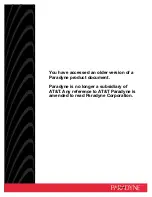
– 150 –
C
HAPTER
4
| Configuring the Switch
IGMP Snooping
If there is no multicast router attached to the local subnet, multicast traffic
and query messages may not be received by the switch. In this case (Layer
2) IGMP Query can be used to actively ask the attached hosts if they want
to receive a specific multicast service. IGMP Query thereby identifies the
ports containing hosts requesting to join the service and sends data out to
those ports only. It then propagates the service request up to any
neighboring multicast switch/router to ensure that it will continue to
receive the multicast service.
The purpose of IP multicast filtering is to optimize a switched network's
performance, so multicast packets will only be forwarded to those ports
containing multicast group hosts or multicast routers/switches, instead of
flooding traffic to all ports in the subnet (VLAN).
C
ONFIGURING
G
LOBAL
AND
P
ORT
-R
ELATED
S
ETTINGS FOR
IGMP
S
NOOPING
Use the IGMP Snooping Configuration page to configure global and port-
related settings which control the forwarding of multicast traffic. Based on
the IGMP query and report messages, the switch forwards traffic only to
the ports that request multicast traffic. This prevents the switch from
broadcasting the traffic to all ports and possibly disrupting network
performance.
If multicast routing is not supported on other switches in your network, you
can use IGMP Snooping and IGMP Query to monitor IGMP service requests
passing between multicast clients and servers, and dynamically configure
the switch ports which need to forward multicast traffic.
Multicast routers use information from IGMP snooping and query reports,
along with a multicast routing protocol such as DVMRP or PIM, to support
IP multicasting across the Internet.
P
ATH
Advanced Configuration, IPMC, IGMP Snooping, Basic Configuration
P
ARAMETERS
These parameters are displayed:
Global Configuration
◆
Snooping Enabled - When enabled, the switch will monitor network
traffic to determine which hosts want to receive multicast traffic.
(Default: Enabled)
This switch can passively snoop on IGMP Query and Report packets
transferred between IP multicast routers/switches and IP multicast host
groups to identify the IP multicast group members. It simply monitors
the IGMP packets passing through it, picks out the group registration
information, and configures the multicast filters accordingly.
◆
Unregistered IPMC Flooding Enabled - Floods unregistered
multicast traffic into the attached VLAN. (Default: Disabled)
Once the table used to store multicast entries for IGMP snooping is
filled, no new entries are learned. If no router port is configured in the
attached VLAN, and Unregistered IPMC Flooding is disabled, any
Summary of Contents for EX26262
Page 1: ...Layer 2 Gigabit PoE Ethernet Switch Management Guide...
Page 2: ......
Page 3: ...MANAGEMENT GUIDE...
Page 4: ......
Page 6: ...6 ABOUT THIS GUIDE...
Page 18: ...18 FIGURES...
Page 20: ...20 TABLES...
Page 22: ...22 SECTION I Getting Started...
Page 34: ...34 SECTION II Web Configuration...
Page 46: ...46 CHAPTER 3 Using the Web Interface Navigating the Web Browser Interface...
Page 290: ...290 CHAPTER 5 Monitoring the Switch Displaying Information About Flow Sampling...
Page 294: ...CHAPTER 6 Performing Basic Diagnostics Running Cable Diagnostics 294...
Page 300: ...CHAPTER 7 Performing System Maintenance Managing Configuration Files 300...
Page 302: ...302 SECTION III Appendices...
Page 320: ...GLOSSARY 320...
Page 325: ......
Page 326: ......
















































